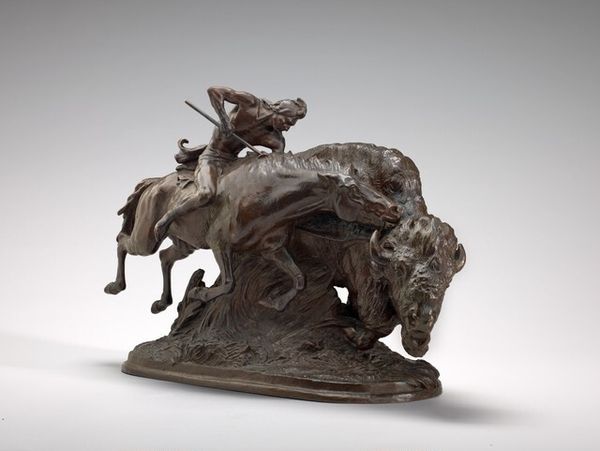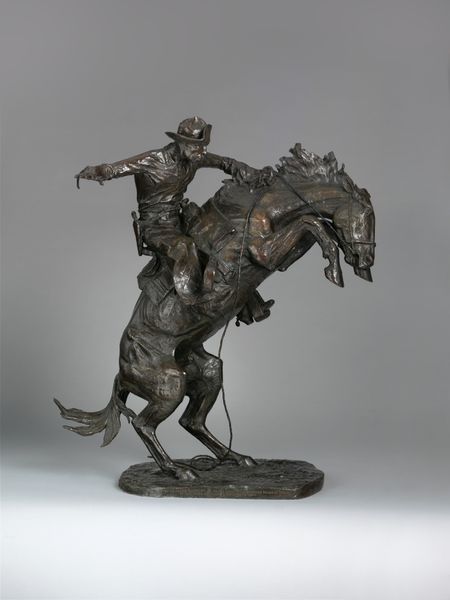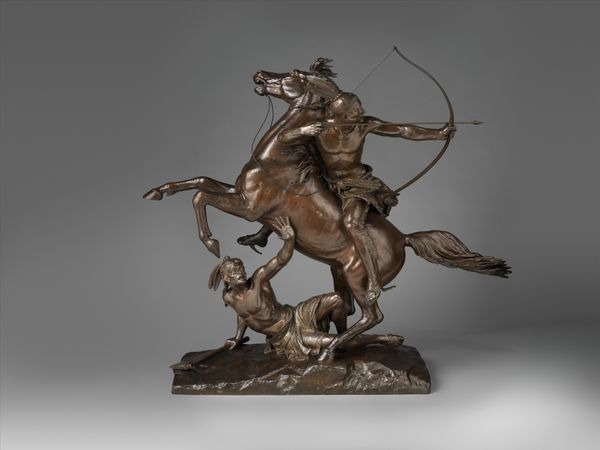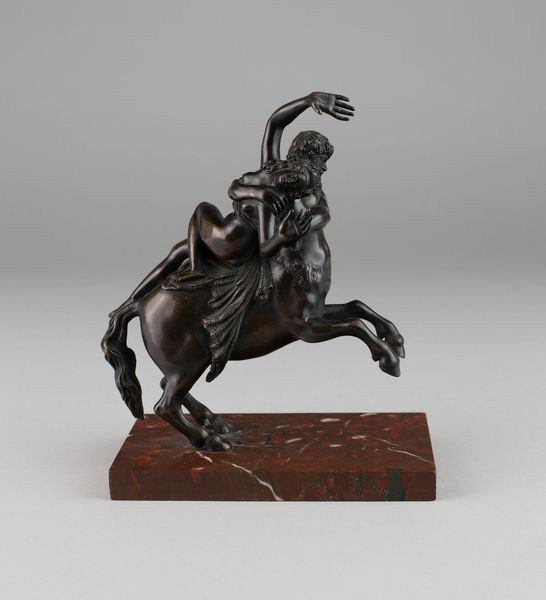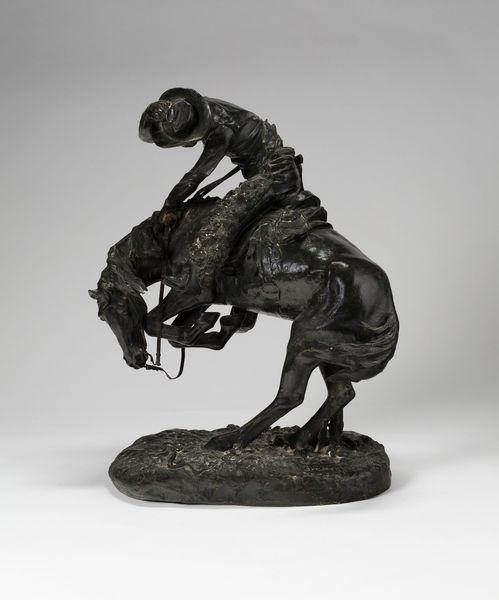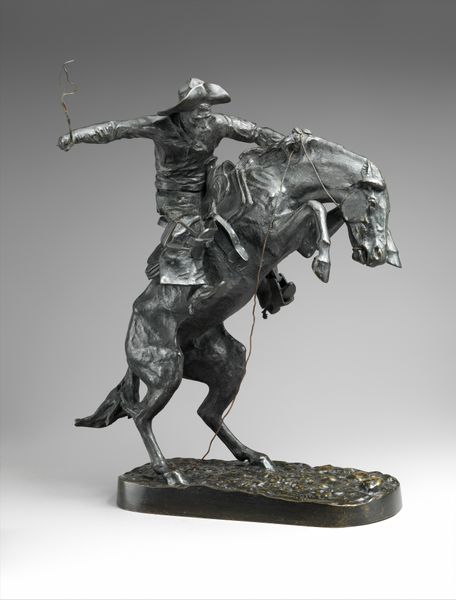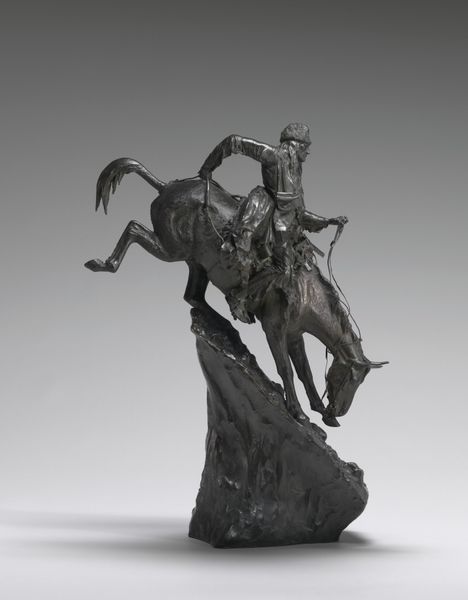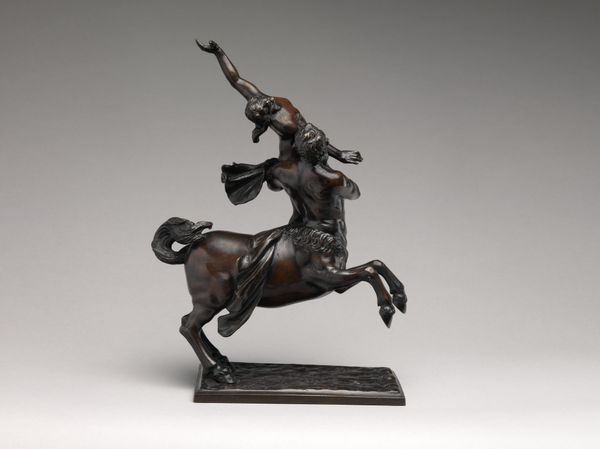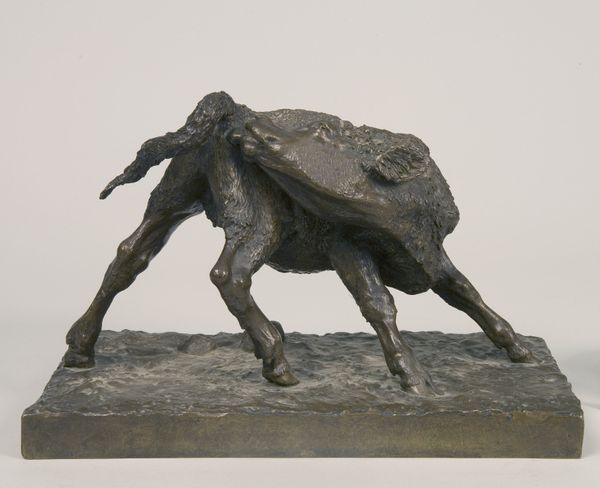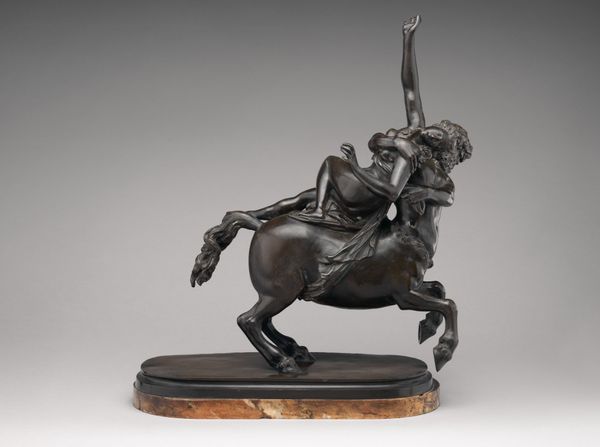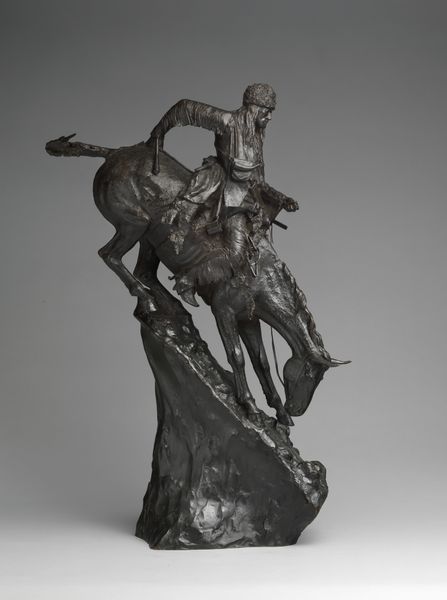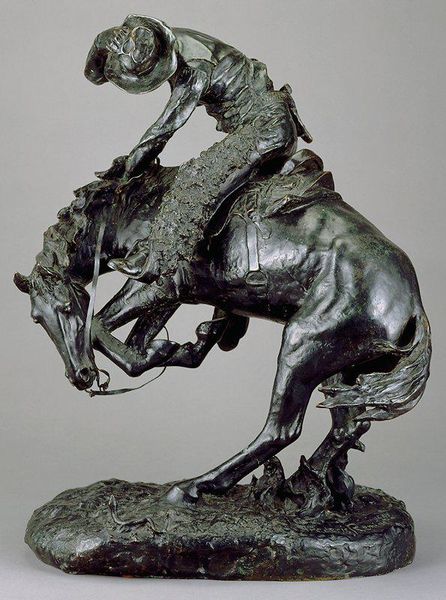
metal, bronze, sculpture
#
narrative-art
#
metal
#
stone
#
sculpture
#
bronze
#
figuration
#
sculpture
#
horse
#
men
#
statue
Dimensions: 20 1/4 x 25 x 8 in. (51.4 x 63.5 x 20.3 cm)
Copyright: Public Domain
Editor: Here we have Frederic Remington's "The Cheyenne," cast in bronze sometime between 1901 and 1907. I'm struck by the dynamism – it feels like the horse and rider are about to leap right out of the museum! What are your initial thoughts? Curator: Indeed, the artwork captures a potent sense of movement, achieved through the artist’s masterful handling of form and texture. Consider the relationship between the horse and rider. How does Remington use the musculature of the horse to convey speed? Notice how the tension is created by the seemingly unbalanced figure; a Formalist would interpret this as more than mere representational accuracy. Editor: It's interesting how the rough texture of the bronze seems to enhance the horse's energy and strength. But what about the rider's figure? How does his form contribute to the overall effect? Curator: Observe how the Cheyenne rider's lean figure and outstretched spear contribute to a sweeping, horizontal thrust, mirrored by the horse's posture. Note that there is more negative space near the spear end of the sculpture than around the horse, creating implied direction that adds to the illusion of swift movement. The bronze, divorced from its possible representational value, stands as a carefully orchestrated composition of lines and shapes in dynamic tension. Editor: So, you're saying it's not just about *what* is being depicted, but *how* it's depicted? Curator: Precisely. We should analyze Remington’s strategic utilization of these intrinsic qualities of his materials and his careful, structural arrangement, not simply regard them as transparent windows into understanding an isolated event or historical theme. This perspective brings focus and value to Remington's work, especially the rough facture of the medium and overall asymmetry. Editor: That makes me think differently about the way sculptors use their materials. I was too focused on the history of the sculpture but thanks to you, now I notice how carefully he worked the surface and how composition creates the drama.
Comments
No comments
Be the first to comment and join the conversation on the ultimate creative platform.
